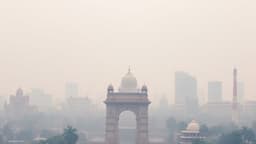Home / Environment / Delhi Conducts Successful Cloud Seeding Trial, Aims for Artificial Rain
Delhi Conducts Successful Cloud Seeding Trial, Aims for Artificial Rain
23 Oct
Summary
- Successful cloud seeding trial over Burari, Delhi
- Four-hour flight tested aircraft readiness, flare deployment, and agency coordination
- Delhi aims for artificial rainfall between October 28-30, pending suitable cloud conditions
In a major milestone for Delhi's battle against pollution, the city's government successfully conducted a cloud seeding trial on October 24, 2025. A Cessna aircraft operated by IIT Kanpur, in coordination with the Delhi government's environment department, carried out a four-hour proving flight from Kanpur to Delhi and back, firing cloud-seeding flares between Khekra and Burari.
The test aimed to evaluate the aircraft's readiness, flare deployment system, and inter-agency coordination before full-scale seeding begins. According to the IIT Kanpur report, the skies over Delhi remained largely cloud-free, with humidity levels below 15%, making precipitation impossible. However, the technical systems performed successfully, and the flight met all objectives of endurance and coordination testing.
Delhi is now waiting for suitable cloud conditions between October 28-30 to initiate the actual seeding operation. If successful, the city could see its first-ever artificial rainfall on October 29, which experts are calling a "turning point in pollution control using science and technology."




